What are you wearing right now? Could you illustrate a character wearing the same textures and combination of clothing in your next piece of art?
Clothing comes in all sorts of textures: smooth, lacy, sheer, fuzzy, fluffy. Capturing these textures in illustration will add personality to your characters, just like in real life. This can accentuate your artwork, be it a picture book illustration or a single pen-and-ink illustration. Attaining these textures on a drawing board shouldn’t cause stress.
Helpful tips and tricks on how to draw clothes on people

Illustrations via CakeSpy
Smooth
Smooth textures, like those found in T-shirts, turtlenecks, and slacks, are pretty easy to attain. The key is to keep the line quality consistent and smooth. This doesn’t mean the smooth textures need to be static. Curves can be shown and the clothing can reflect the shape of character movements such as walking or dancing.
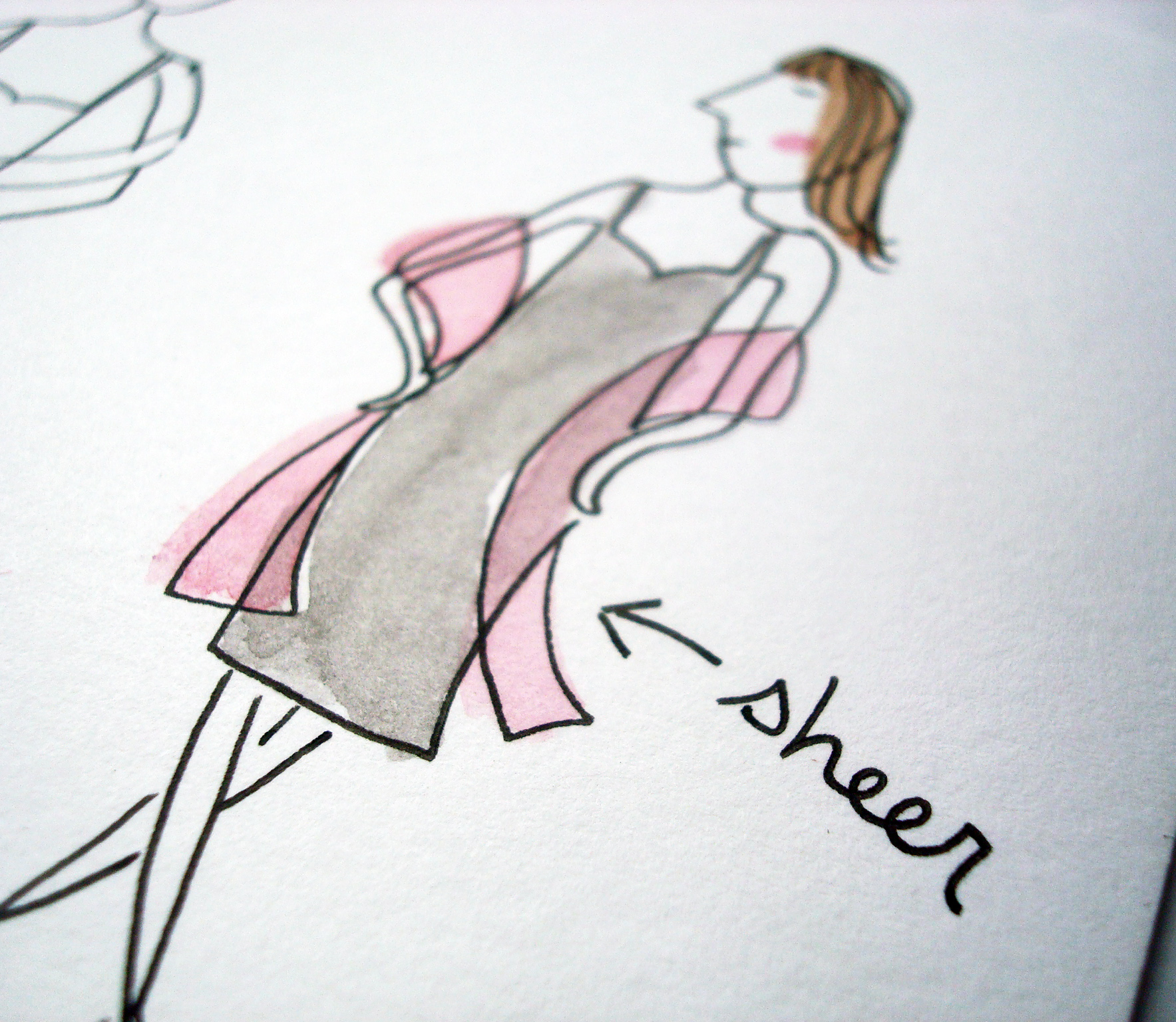
Sheer
Sheer clothing can be conveyed easily by using a slightly lighter line quality for the sheer article of clothing, but maintain strong lines below, like the arms still showing through the lines of a shawl, as shown in the above image.
A more advanced tip: If you’re adding color, dull the color underneath the sheer portion to trick the eye into the sheer item slightly masking other clothing.
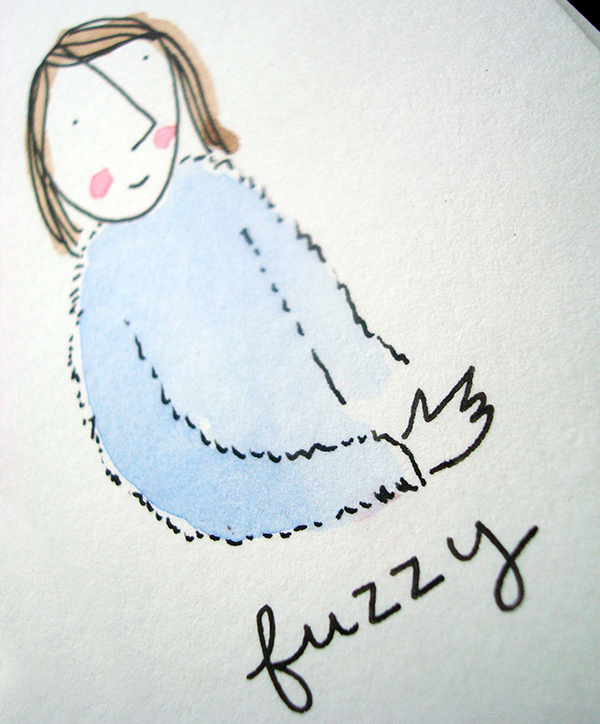
Fuzzy
An easy way to attain a fuzzy look is to create small flicks of a pen or paintbrush create a tight, textured area, which still follows a controlled shape. The lines forming a sweater on the above character could easily be a fuzzy or mohair sweater, but the fact that they maintain a definite shape keeps it from looking too fluffy.
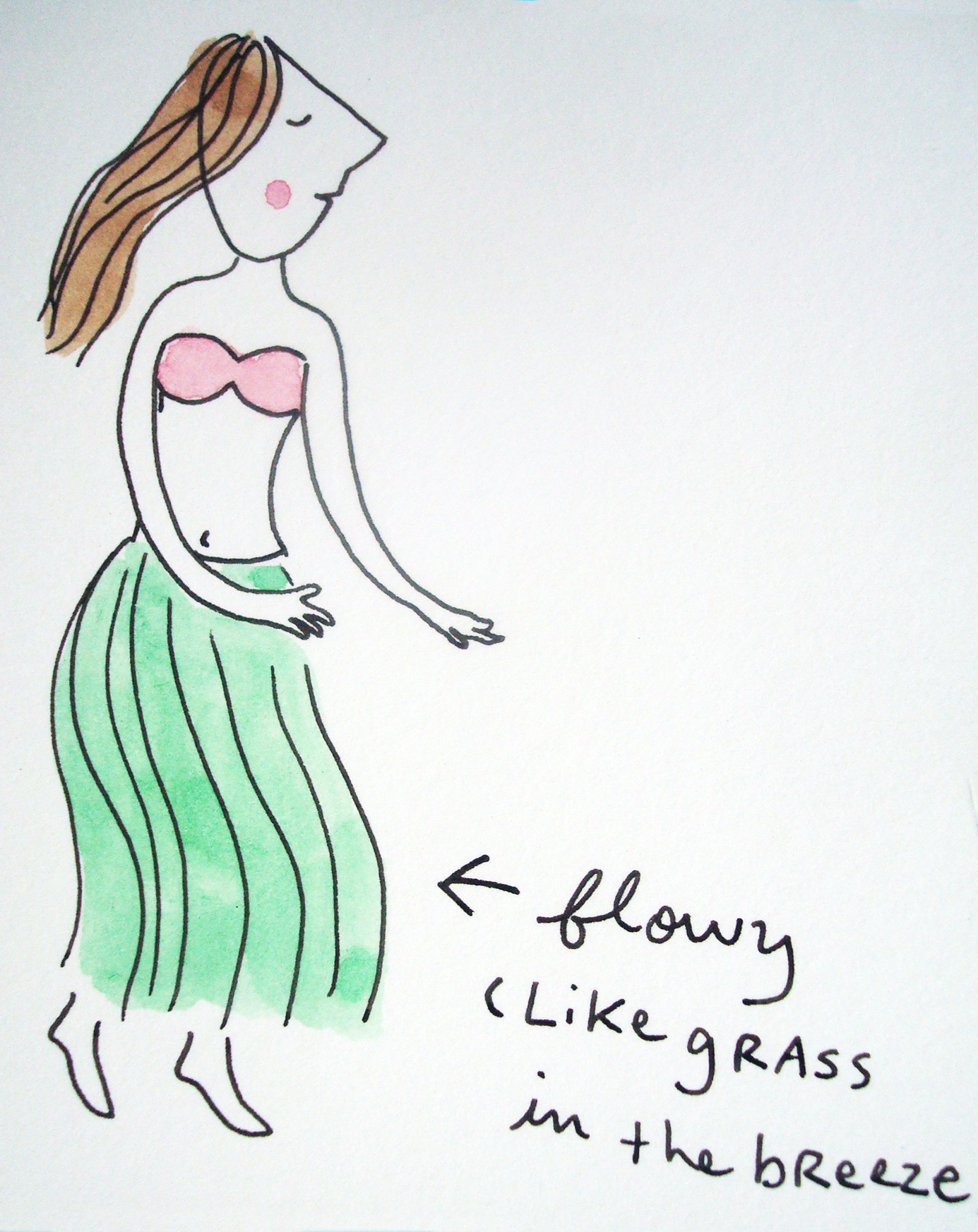
Flowy
When you think about flowing clothing, you think about elements of nature like flowing water and gentle breezes. Let your clothing follow the same trajectory. A grass skirt easily flows and a hippie skirt can be drawn similarly:
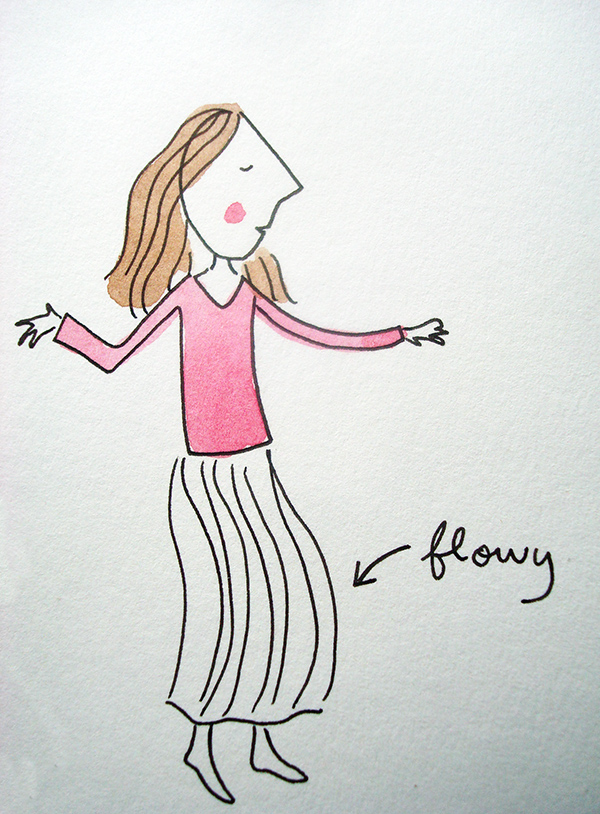
The pairing of smooth versus flowy accentuates the contrast. Following the cue of the natural current, you’ll get the point across.
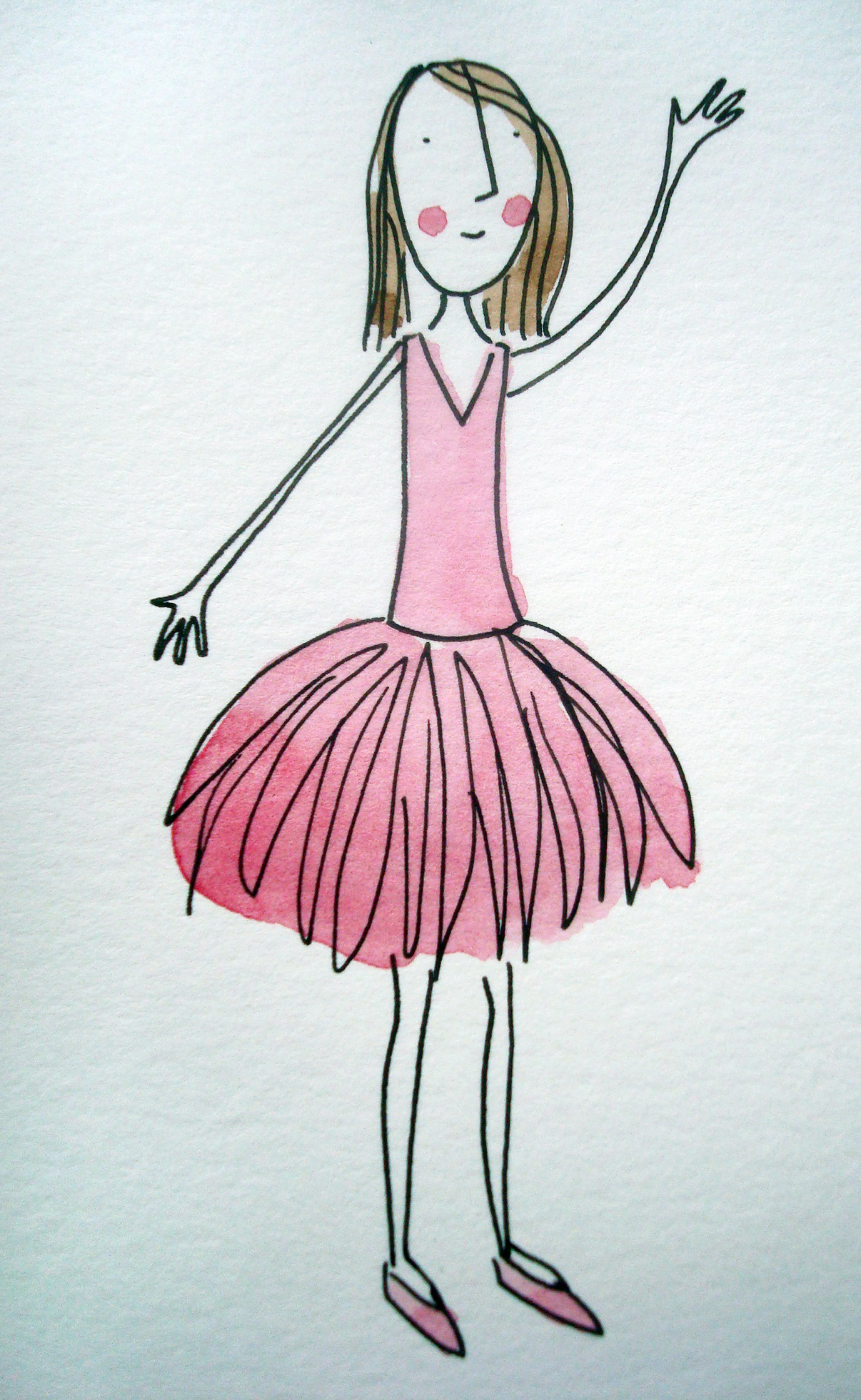
Furry/fluffy/feathery
The difference between furry and feathery or fluffy is mainly the directions that you draw lines in. Feathery can be a more graceful version of furry, as in this ballet skirt.
Fluffy can be a bit crazy with small lines going in all directions. Think “feather boa” and you’re on the right track.
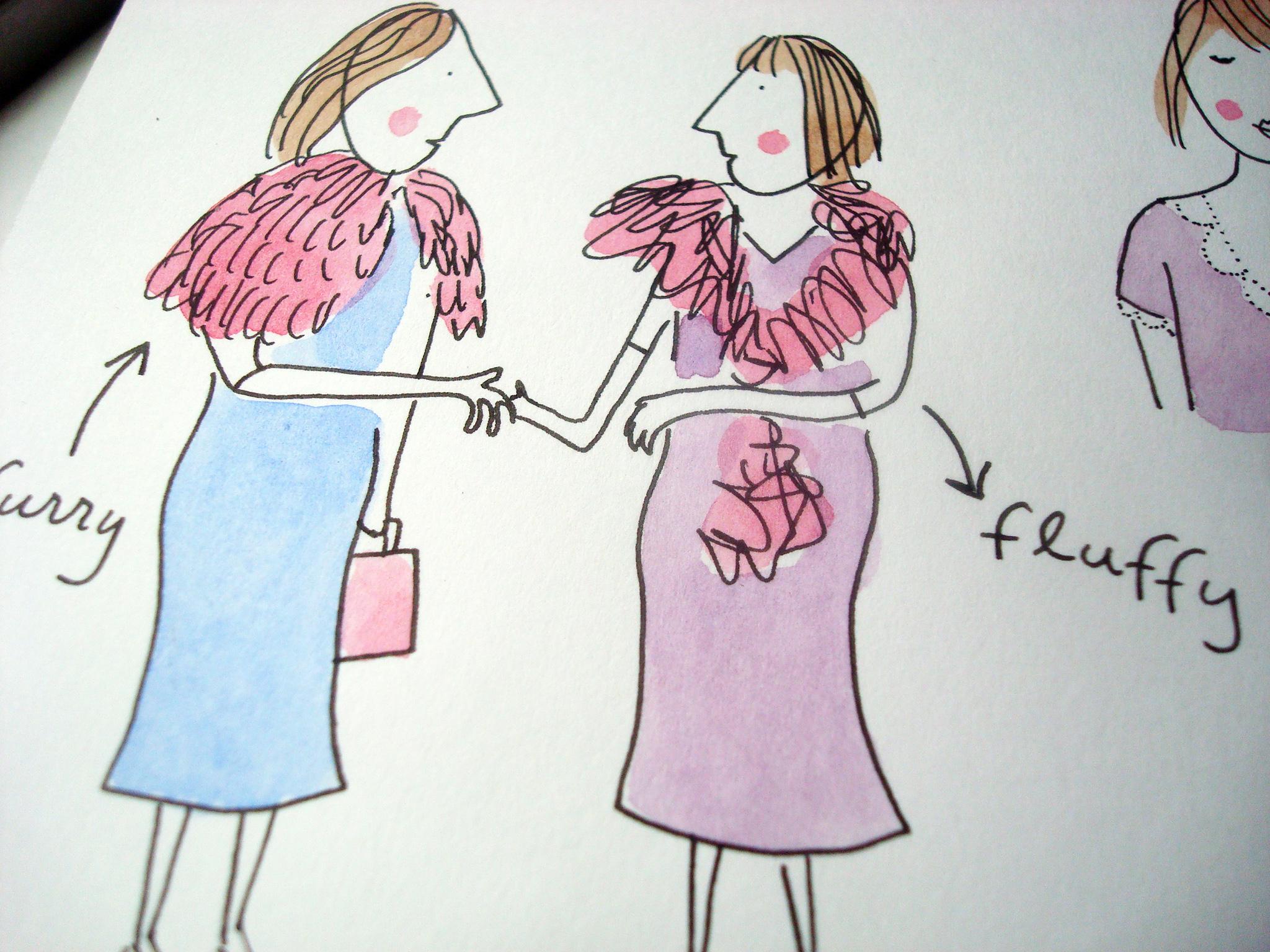
Furry is fun to draw. It’s the same general idea as “fuzzy,” but with a more varied brush or pen stroke in direct relation to the amount of fur in question.
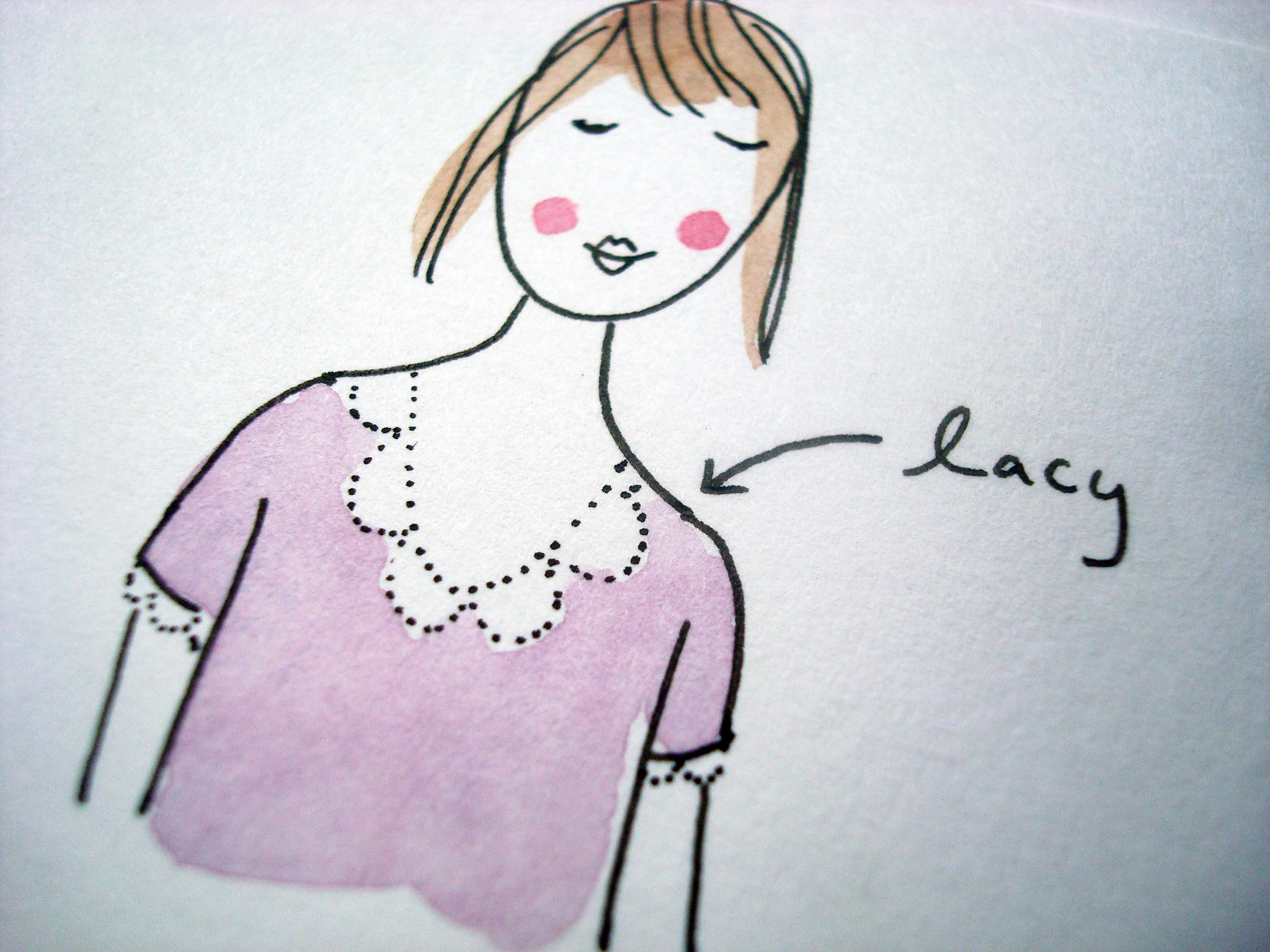
Lacy
To get the delicate texture of lace, consider pointillism. Paired with the “smooth” look of a garment, the delicate dots arranged in a lacy pattern give both the delicate look and texture of a lacy finish.

Fitted
To attain a fitted look, simply look to anatomy. By drawing the shape of the clothing around the natural forms and curves of the body, you will naturally attain a fitted look.
Take, for instance, the above illustration. First, check out the first character, in her undies. Oh, la la! The shape of her body is evident with such scant attire. In the middle image, however, the character wears loose-fitting clothing which doesn’t much indicate her body shape. In the third image, she wears fitted slacks, which follow the shapes of the character dressed in their underwear, but in a more modest form.

Share tips, start a discussion or ask one of our experts or other students a question.
No Responses to “Wear It Well: Tips for Creating Clothing Textures in Illustration”